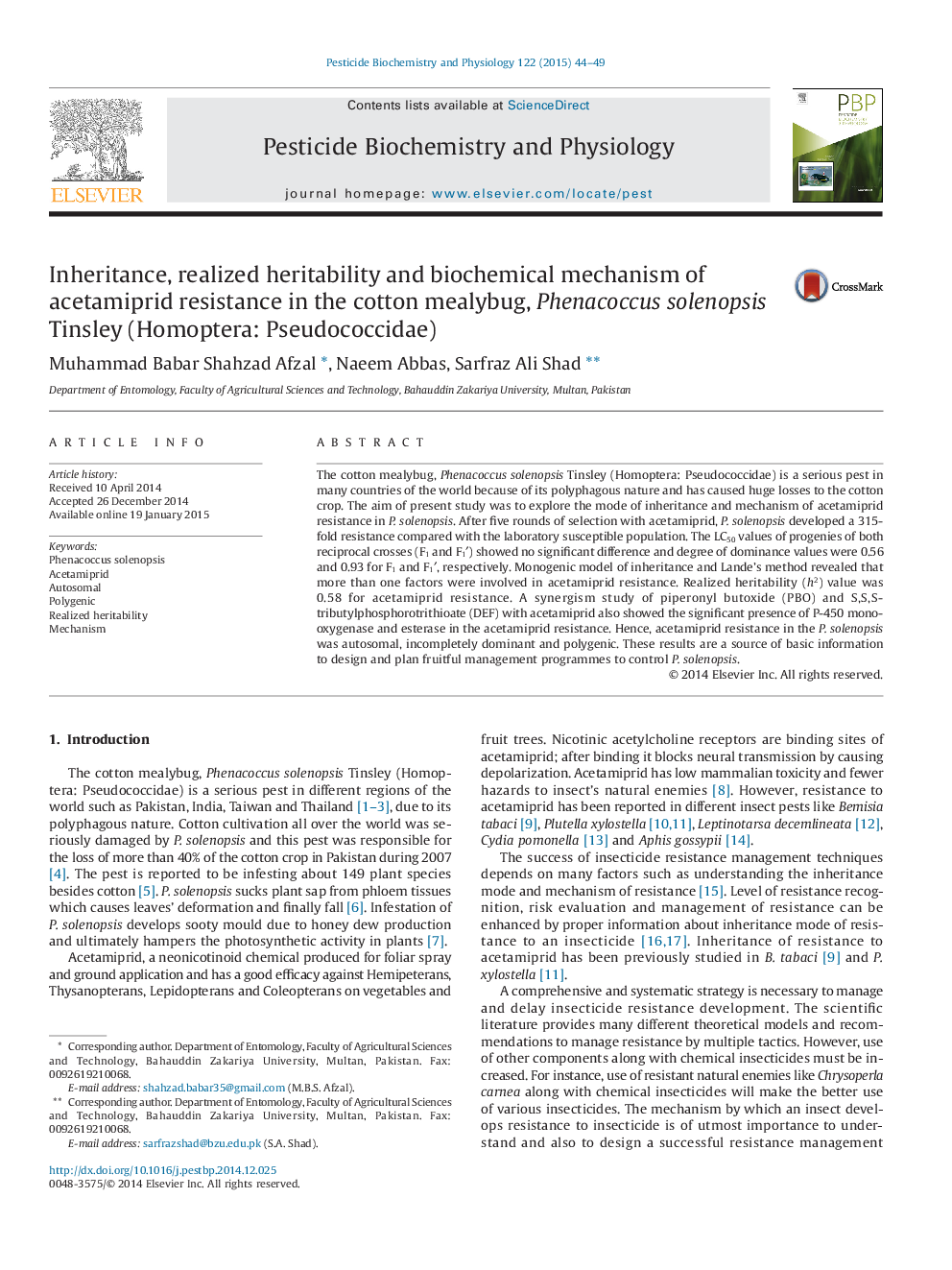| Article ID | Journal | Published Year | Pages | File Type |
|---|---|---|---|---|
| 2009054 | Pesticide Biochemistry and Physiology | 2015 | 6 Pages |
•After five generations of selection, P. solenopsis developed 315-fold resistance to acetamiprid.•Acetamiprid resistance was autosomal, incompletely dominant and polygenic in P. solenopsis.•The realized heritability value of acetamiprid resistance was 0.58 in Aceta-SEL population.•Metabolic detoxification mechanism is involved in acetamiprid resistance.
The cotton mealybug, Phenacoccus solenopsis Tinsley (Homoptera: Pseudococcidae) is a serious pest in many countries of the world because of its polyphagous nature and has caused huge losses to the cotton crop. The aim of present study was to explore the mode of inheritance and mechanism of acetamiprid resistance in P. solenopsis. After five rounds of selection with acetamiprid, P. solenopsis developed a 315-fold resistance compared with the laboratory susceptible population. The LC50 values of progenies of both reciprocal crosses (F1 and F1′) showed no significant difference and degree of dominance values were 0.56 and 0.93 for F1 and F1′, respectively. Monogenic model of inheritance and Lande's method revealed that more than one factors were involved in acetamiprid resistance. Realized heritability (h2) value was 0.58 for acetamiprid resistance. A synergism study of piperonyl butoxide (PBO) and S,S,S-tributylphosphorotrithioate (DEF) with acetamiprid also showed the significant presence of P-450 mono-oxygenase and esterase in the acetamiprid resistance. Hence, acetamiprid resistance in the P. solenopsis was autosomal, incompletely dominant and polygenic. These results are a source of basic information to design and plan fruitful management programmes to control P. solenopsis.
Graphical abstractFigure optionsDownload full-size imageDownload as PowerPoint slide
